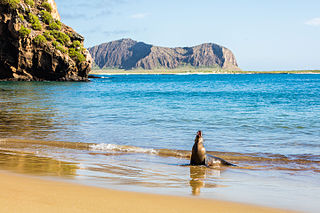
The Galápagos Islands are an archipelago of volcanic islands in the Eastern Pacific, located around the equator, 900 km (560 mi) west of the mainland of South America. They form the Galápagos Province of the Republic of Ecuador, with a population of slightly over 33,000 (2020). The province is divided into the cantons of San Cristóbal, Santa Cruz, and Isabela, the three most populated islands in the chain. The Galápagos are famous for their large number of endemic species, which were studied by Charles Darwin in the 1830s and inspired his theory of evolution by means of natural selection. All of these islands are protected as part of Ecuador's Galápagos National Park and Marine Reserve.

The white-cheeked pintail, also known as the Bahama pintail or summer duck, is a species of dabbling duck that is spottily distributed throughout South America and the Caribbean. It was first described by Carl Linnaeus in his landmark 1758 10th edition of Systema Naturae under its current scientific name.
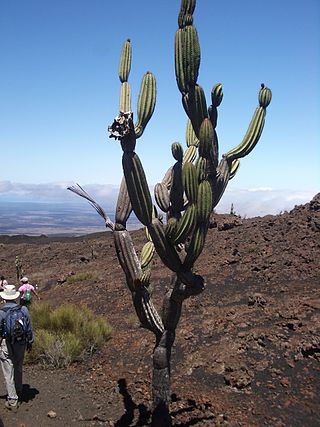
Jasminocereus is a genus of cacti with only one species, Jasminocereus thouarsii, endemic to the Galápagos Islands, territorially a part of Ecuador. In English it is often called the candelabra cactus. At maturity it has a branched, treelike habit, and may be up to 7 m (23 ft) tall. The stems are made up of individual sections with constrictions between them. Its creamy white to greenish flowers open at night and are followed by greenish to reddish fruits.
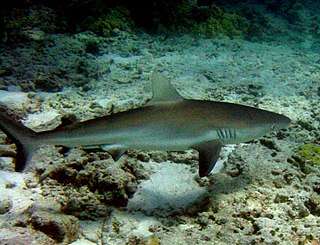
The Galapagos shark is a species of requiem shark, in the family Carcharhinidae, found worldwide. It favors clear reef environments around oceanic islands, where it is often the most abundant shark species. A large species that often reaches 3.0 m (9.8 ft), the Galapagos reef shark has a typical fusiform "reef shark" shape and is very difficult to distinguish from the dusky shark and the grey reef shark. An identifying character of this species is its tall first dorsal fin, which has a slightly rounded tip and originates over the rear tips of the pectoral fins.
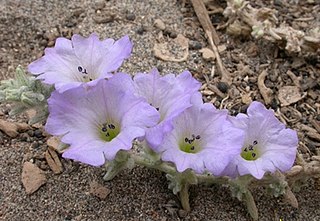
Nolana is a genus of hard annual or perennial plants in the nightshade family. The genus is mostly native to Chile and Peru. Species in this genus, especially N. paradoxa, serve as a model system for studies on flower color.

The Galápagos mockingbird is a species of bird in the family Mimidae. It is endemic to the Galápagos Islands, Ecuador.

Alternanthera galapagensis is a species of plant in the family Amaranthaceae. It is endemic to the Galapagos.
Euxesta galapagensis is a species of ulidiid or picture-winged fly in the genus Euxesta of the family Ulidiidae. It was described by Charles Howard Curran in 1934. It is endemic to Galápagos Islands.

Autoplusia egena, the bean leafskeletonizer, is a moth of the family Noctuidae. It is found in California, North Carolina to the South-eastern parts of the United States, the Antilles, Mexico, Central America and South America. The subspecies Autoplusia egena galapagensis is endemic to the Galapagos islands.

Utetheisa galapagensis is a moth of the family Erebidae. It is known only from the Galápagos island of San Cristóbal. It is probably endemic to the archipelago.
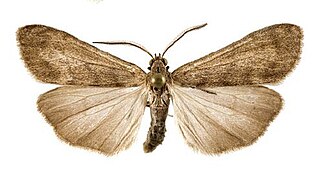
Utetheisa connerorum is a moth of the family Erebidae. It is endemic to the Galapagos archipelago, where it is the most widespread of all Utetheisa species. It has been found on Baltra, Fernandina, Floreana, Genovesa, Isabela, Marchena, Pinta, San Cristóbal, Santa Cruz, Santa Fé, and Santiago.

Starksia galapagensis, the Galapagos blenny, is a species of labrisomid blenny endemic to the Galapagos Islands. It inhabits rocky reefs with plentiful weed-growth at depths of from 3 to 25 m. This species can reach a length of 4.5 cm (1.8 in) TL.
Callechelys galapagensis, the Galapagos ridgefin eel, is an eel in the family Ophichthidae. It was described by John E. McCosker and Richard Heinrich Rosenblatt in 1972. It is a tropical, marine eel which is known from four specimens collected from the Galapagos Islands, in the southeastern Pacific Ocean. It inhabits coral, sand and rock.
The Galapagos leaf-toed gecko is a species of gecko. It is endemic to the Galapagos Islands.
Cheverella is a monotypic genus of snout moths in the subfamily Spilomelinae of the family Crambidae. It contains only one species, Cheverella galapagensis, which is endemic to the Galápagos Islands of Ecuador. Both the genus and the species were first described by Bernard Landry in 2011. The genus is placed in the tribe Udeini.
Peperomia galapagensis is a species of flowering plant in the Piperaceae (pepper) family. It is endemic to the Galapagos Islands.

Passiflora vesicaria is a species of plant in the family Passifloraceae. It was first described by Linnaeus, later synonymized with Passiflora foetida as the varieties Passiflora foetida var. glabrifolia, P. foetida var. hispida, and P. foetida var. isthmia. Vanderplank restored it to full species status in 2013.

Bifurcaria galapagensis, the Galapagos stringweed, is a species of brown algae seaweed endemic to the Galapagos Islands. The IUCN Red List categorized the algae as Critically Endangered, after a March 2007 assessment noted that the plant hadn't been since 1983.













